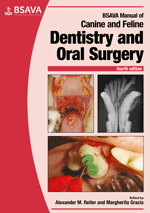
Full text loading...

This chapter covers the principles, equipment and techniques required to carry out a range of diagnostic imaging techniques on the head. Interpretation and common presentations are covered in depth using clinical photographs, radiographs, computed tomography images, magnetic resonance images and ultrasonograms. Operative Techniques: Full-mouth dental radiographs in the dog; Full-mouth dental radiographs in the cat
Dental and oral diagnostic imaging and interpretation, Page 1 of 1
< Previous page | Next page > /docserver/preview/fulltext/10.22233/9781905319602/9781905319602.4-1.gif

Full text loading...

































































































